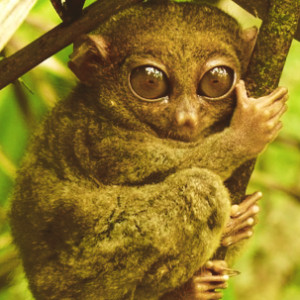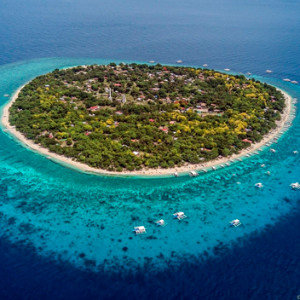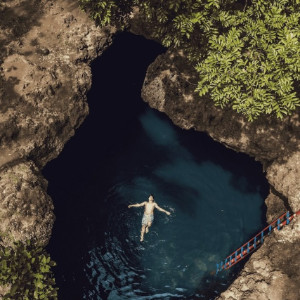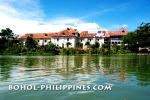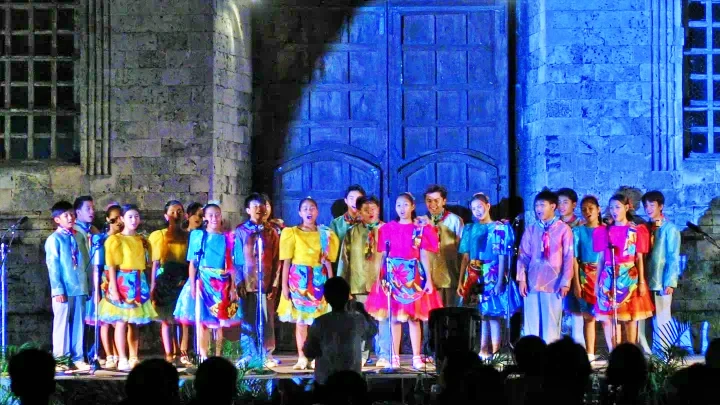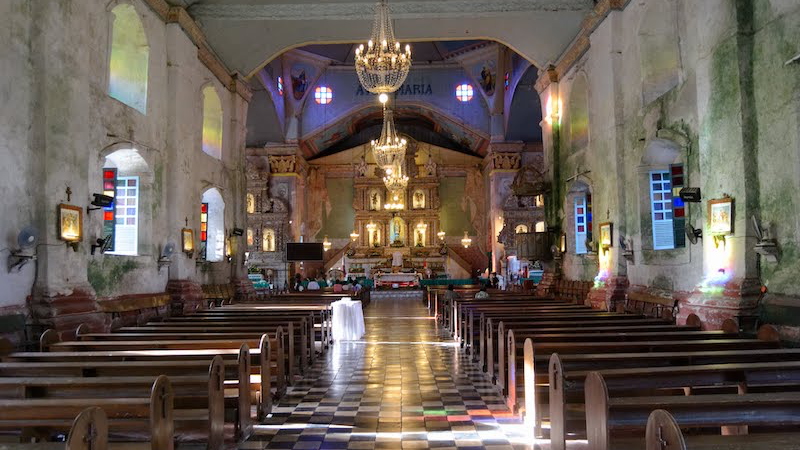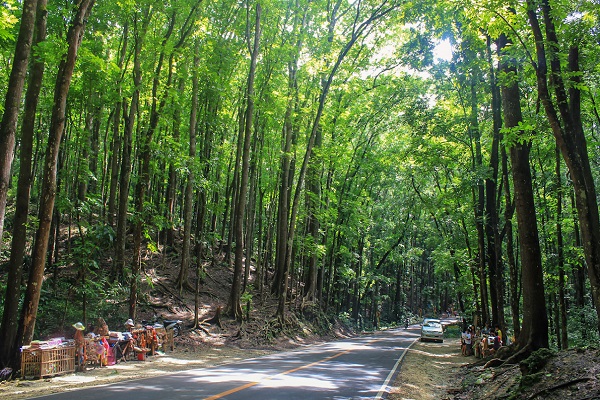Villamor Ancestral House
Secure your Cebu Bohol ferry tickets today to start your unforgettable journey!
The Villamor House was built in the late 19th century by Ciriaco Villamor, a trader and his wife, Agrifina Buhion. The house lies along the street at Baliaut, Poblacion, Baclayon, Bohol and is one of the oldest ancestral houses in the town.
Recommended Bohol Philippines Tours
[ Bohol Sight Seeing Day Trips - Check Out Availability ]
[ Full Day Cruise and Sailing Tours - Check out Availability ]
[ Full Day Adventure Tours - Check out Availability ]
Discover more of Bohol's natural wonders through our recommended tours. Click on the links below to embark on unforgettable adventures:
Ready to explore the beautiful islands of Cebu and Bohol? Secure your ferry tickets today through 12go and start your unforgettable journey!
Built in a geometric style, the house is rectangular in shape and made up of hardwood having two floors.
On the outside, the house is dull looking, with wind-beaten wood devoid of paint. The living quarters are on the upper floor.
The house has wide windows with shutters that can be slid back to allow the sunshine in. The shutters though are made plainly of wood, unlike other ancestral houses that have windows made of capiz shells that allow the sunshine in even if closed. If the windows are totally closed, you can just imagine how dark it will be inside.
The lower portion of the house is cemented with wide doorways. An extension has been made to serve as a bodega or a store. Concreting of the lower portion may have been done on a later date by the family, who until now owns and live in the house.
Entrance to the house is through the middle doorway. From the street level, one goes down a few steps to the ground floor.
A wide wooden stairway leads up to the upper floor. The steps, handrails and balusters are all made of hardwood. Top-floor rails have geometric designs on them aside from the balusters.
The living room is wide and spacious and displays an upholstered sala set with the top of the seats decorated with white doilies, probably made by the matriarch of the family. They are so dainty and fragile to look at. Crocheting was a must activity for the women in the earlier days.
One side of the room, leaning upon an exposed post, is a framed painting of the original couple in their later days. The matriarch donned a Maria Clara gown and Don Ciriaco in Barong Tagalog. Below the painting is a very big, fat and antique-looking clay jar with elaborate etchings. Other look-alike jars can be found in the living room.
On a far corner of the room and above an old plain cabinet is a large laminated picture of the couple in their younger days. Another big, fat jar is below the picture. An antique chair is near the cabinet. Other posts in the room have framed and laminated pictures on them.
Another antique piece that gets your attention upon entering the living room is a six-setter antique table with carved antique armchairs.
The rectangle-shaped table is covered with a crocheted piece, beautiful and surely painstakingly made. This table covering is an art piece that is seldom seen nowadays.
Having toured the living room, the next best place to visit are the bedrooms. One bedroom displays two single wooden beds minus the mattresses with carved bedposts that obviously are designed for mosquito nets. Two big wooden cabinets are on one side of the room with a wooden table in between. One cabinet has a full-length mirror on it.
The second bedroom shows a metal bed with a mattress and metal bedpost for the nets. The metal holders have intricate designs on them. The headboard is plainly designed yet on it is a beautiful painted etching of a bunch of roses. Aside from a built-in cabinet, the room also displays a big wooden cabinet with a full-length mirror and a smaller wooden cabinet beside it.
Let us go now to the dining room. A plain rectangular table meets our eyes; plain in the sense that it does not have any carvings on it and the legs of the table are ordinary and straight. A side table displays wooden wares such as trays and serving dishes.
On one side of the wall is an open built-in cabinet with displays of family collections of delicate and white china wares, a few glass wares and bottle collections.
You will also find some red and unique candleholders with candles, of course. A wooden china cabinet with partial glass doors is also in the dining room, with cups and saucers and other glass/porcelain collections.
From the dining room, a doorway leads to the kitchen.
The kitchen looks drab and bare with a long tiled cabinet on one side. An old big chest freezer stands on one side. Flooring in the kitchen, as well as in all parts of the upper level of the house, is made up of hardwood planks.
That’s the end of our Villamor house tour. Maybe if you can come for a visit, you can find more interesting things that I may have failed to notice.
Beauty depends on the eyes of the beholder and things do not appear the same to a lot of people.
The present Villamor family living in the house has put it up for a B & B or offers bed and breakfast accommodations.
Top of Villamor House
Photos courtesy of Ral_M
Ready to explore the beautiful islands of Cebu and Bohol? Secure your ferry tickets today through 12go and start your unforgettable journey!
recommended hotel booking
Book your stay in Bohol's breathtaking surroundings through Agoda and experience the ultimate relaxation
Top 25 Sights and Attractions in Bohol
- Chocolate Hills
- Tarsier Conservation Sanctuary
- Panglao Island
- Loboc River Cruise
- Hinagdanan Cave
- Balicasag Island
- Alona Beach
- Bilar Man-made Forest
- Blood Compact Shrine
- Baclayon Church
- Bohol Bee Farm
- Anda Beach
- Sipatan Twin Hanging Bridge Loboc
- Danao Adventure Park
- Sagbayan Peak
- Butterfly Conservation Center
- Clarin Ancestral House
- Dimiao Twin Falls
- Mag-Aso Falls
- Anda White Beach
- Lamanok Island
- Rajah Sikatuna Protected Landscape
- Dauis Church
- Can-umantad Falls
- Punta Cruz Watchtower
Top 20 Destinations of Bohol
- Tagbilaran City
- Panglao Town
- Talibon Town
- Anda Town
- Loboc Town
- Dauis Town
- Ubay Town
- Tubigon Town
- Loon Town
- Jagna Town
- Alicia Town
- Carmen Town
- Getafe
- Danao Town
- Bilar
- Alburquerque
- Sierra Bullones
- Sagbayan Town
- Baclayon Town
- Antequera
Ready to explore the beautiful islands of Cebu and Bohol? Secure your ferry tickets today through 12go and start your unforgettable journey!
All Rights Reserved ©2023. Bohol Philippines Travel Guide
Address: Talibon, Bohol, Philippines



